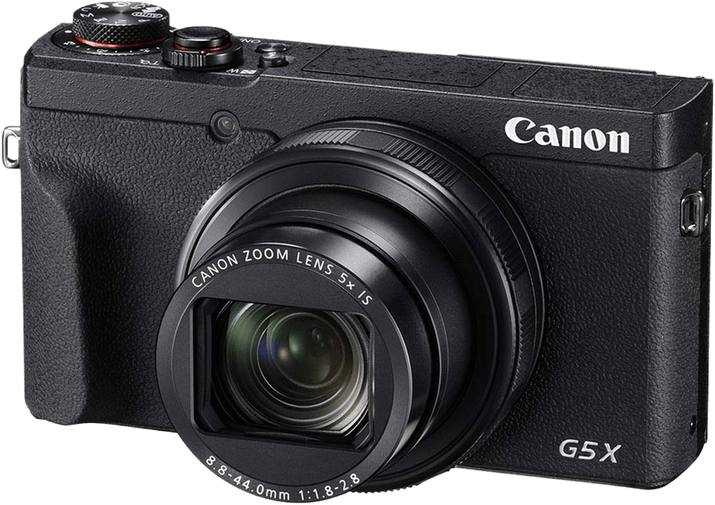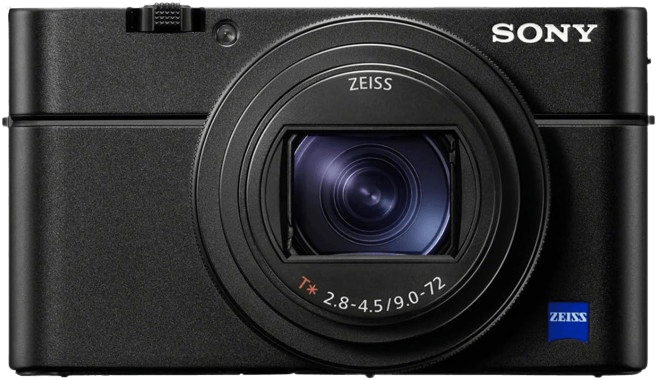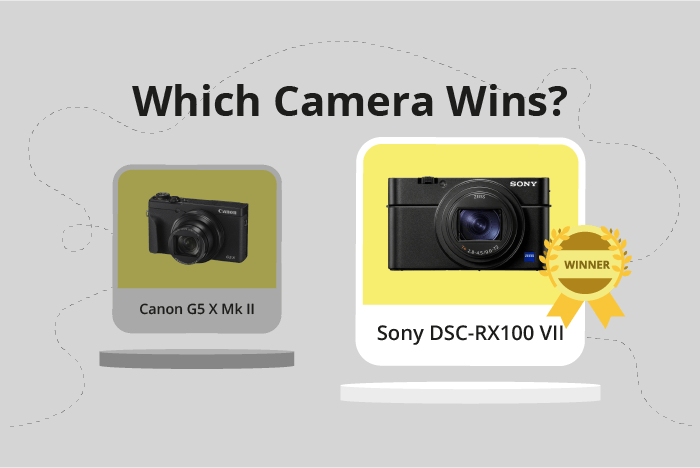Canon PowerShot G5 X Mark II vs Sony Cyber-shot DSC-RX100 VII Comparison
Canon PowerShot G5 X Mark II

Sony RX100 VII

The Sony Cyber-shot DSC-RX100 VII emerges as the winner with a score of 60/100, just one point ahead of the Canon PowerShot G5 X Mark II, which scored 59/100. Both cameras share some common specifications, such as being compact cameras released in 2019 and having similar dimensions.
The Sony RX100 VII has an edge due to its lighter weight at 302g, making it more portable than the Canon G5 X Mark II, which weighs 340g. However, the Canon G5 X Mark II is more affordable with a launch price of $900, compared to the Sony’s $1200 price tag.
Considering these points, the Sony RX100 VII offers a slight advantage in portability, while the Canon G5 X Mark II provides a more budget-friendly option. The choice between these two cameras ultimately depends on the user’s priorities and preferences.
Canon PowerShot G5 X Mark II vs Sony Cyber-shot DSC-RX100 VII Overview and Optics
The Sony Cyber-shot DSC-RX100 VII wins in the optics comparison with a score of 61/100, while the Canon PowerShot G5 X Mark II scores 58/100. Both cameras share some common specifications, such as having 20 megapixels, a 1″ CMOS sensor, fixed lens mount, and image stabilization. However, there are differences that set them apart and contribute to the winning camera’s higher score.
The Sony RX100 VII has a Bionz X processor and a DXOMARK sensor score of 63. These features contribute to the camera’s better performance in image processing and overall image quality. The higher sensor score indicates that the Sony camera can produce better images, especially in terms of dynamic range, color depth, and low-light performance.
On the other hand, the Canon G5 X Mark II has a Digic 8 processor and a DXOMARK sensor score of 58. Although it falls short in comparison to the Sony RX100 VII, the Canon camera excels in shooting speed with 30 frames per second, compared to Sony’s 5 frames per second. This makes the Canon model more suitable for capturing fast-moving subjects and action scenes.
In terms of optics, the Sony Cyber-shot DSC-RX100 VII outperforms the Canon PowerShot G5 X Mark II due to its superior processor and sensor score. However, the Canon model has an advantage in shooting speed, making it a better choice for action photography. Ultimately, the choice between these two cameras depends on the user’s specific needs and preferences in terms of image quality and shooting speed.
Canon PowerShot G5 X Mark II vs Sony Cyber-shot DSC-RX100 VII Video Performance
The Canon PowerShot G5 X Mark II and the Sony Cyber-shot DSC-RX100 VII both have a video score of 91/100, showing that their video capabilities are on par with each other. Both cameras have a maximum video resolution of 4K and video dimensions of 3840 x 2160. Additionally, they both offer a maximum video frame rate of 120fps and have built-in time-lapse functionality.
The Canon PowerShot G5 X Mark II and the Sony Cyber-shot DSC-RX100 VII share these impressive video specifications, making them suitable for various video recording needs. However, there might be some specific features or user preferences that make one camera more appealing than the other.
Despite having the same video score, the Canon PowerShot G5 X Mark II might be more suitable for some users due to its ergonomic design and user-friendly interface. This allows for a more seamless and comfortable video recording experience, especially for extended periods.
On the other hand, the Sony Cyber-shot DSC-RX100 VII might be preferred by others for its compact size and lightweight design. This makes it more portable and convenient for on-the-go video recording, especially for travel and adventure enthusiasts.
Both cameras excel in their video capabilities, offering high-quality performance and features. The choice between the Canon PowerShot G5 X Mark II and the Sony Cyber-shot DSC-RX100 VII ultimately comes down to individual preferences and specific needs. Users should consider factors like design, ease of use, and portability when making their decision, as both cameras provide exceptional video quality and functionality.
Canon PowerShot G5 X Mark II vs Sony Cyber-shot DSC-RX100 VII Features and Benefits
The Canon PowerShot G5 X Mark II wins the features comparison with a score of 70/100, while the Sony Cyber-shot DSC-RX100 VII scores 68/100. Both cameras share several specifications, including a 3-inch touchscreen, flip screen, Wi-Fi, Bluetooth, and the absence of GPS.
The Canon PowerShot G5 X Mark II outperforms the Sony Cyber-shot DSC-RX100 VII in screen resolution, boasting 1,040,000 dots compared to the Sony’s 921,000 dots. This higher resolution provides a sharper and clearer display for users when reviewing photos and navigating menus.
While the Sony Cyber-shot DSC-RX100 VII did not win the overall features comparison, it still has strong specifications that make it a competitive choice. The camera’s features are mostly on par with the Canon PowerShot G5 X Mark II, with only a slight difference in screen resolution. This similarity means that users may still find the Sony Cyber-shot DSC-RX100 VII to be a suitable option depending on their individual needs and preferences.
Both cameras offer a range of impressive features, with the Canon PowerShot G5 X Mark II taking a slight lead due to its higher screen resolution. However, the Sony Cyber-shot DSC-RX100 VII remains a strong contender, and users should consider their specific requirements when choosing between these two cameras.
Canon PowerShot G5 X Mark II vs Sony Cyber-shot DSC-RX100 VII Storage and Battery
The Sony Cyber-shot DSC-RX100 VII outperforms the Canon PowerShot G5 X Mark II in storage and battery, scoring 29/100 compared to Canon’s 27/100. Both cameras have one memory card slot and offer USB charging. They differ in memory cards accepted and battery life.
The Sony camera accepts SD/SDHC/SDXC and Memory Stick Pro Duo cards, providing more storage options. Additionally, its battery life lasts for 260 shots, outlasting Canon’s 230 shots. The Sony camera’s NP-BX1 battery type contributes to its longer battery life.
The Canon camera accepts SD/SDHC/SDXC cards (UHS-I compatible), which allows for faster data transfer speeds. Its NB-13L battery type, however, results in a shorter battery life compared to the Sony camera.
The Sony Cyber-shot DSC-RX100 VII is the better choice for extended shooting and additional storage options. The Canon PowerShot G5 X Mark II, on the other hand, provides faster data transfer with UHS-I compatibility.
Canon PowerShot G5 X Mark II vs Sony Cyber-shot DSC-RX100 VII – Our Verdict
Are you still undecided about which camera is right for you? Have a look at these popular comparisons that feature the Canon PowerShot G5 X Mark II or the Sony Cyber-shot DSC-RX100 VII:
- Ricoh GR IIIx vs Sony Cyber-shot DSC-RX100 VII
- Canon PowerShot G7 X Mark III vs Sony Cyber-shot DSC-RX100 VII
- Panasonic Lumix ZS200 (TZ200) vs Sony Cyber-shot DSC-RX100 VII
- Canon PowerShot G5 X Mark II vs PowerShot G7 X Mark III
- Canon PowerShot G1 X Mark III vs Sony Cyber-shot DSC-RX100 VII
- Canon EOS R10 vs PowerShot G5 X Mark II

